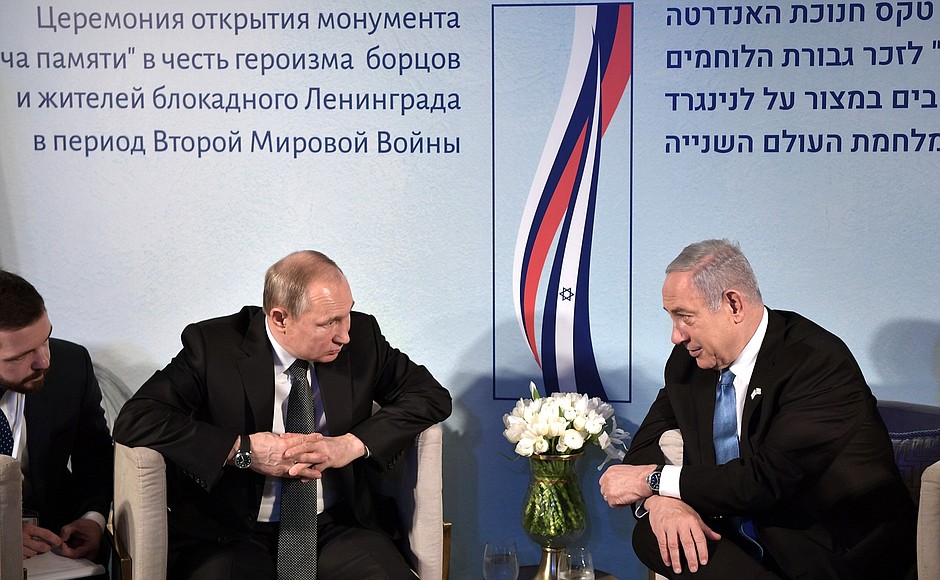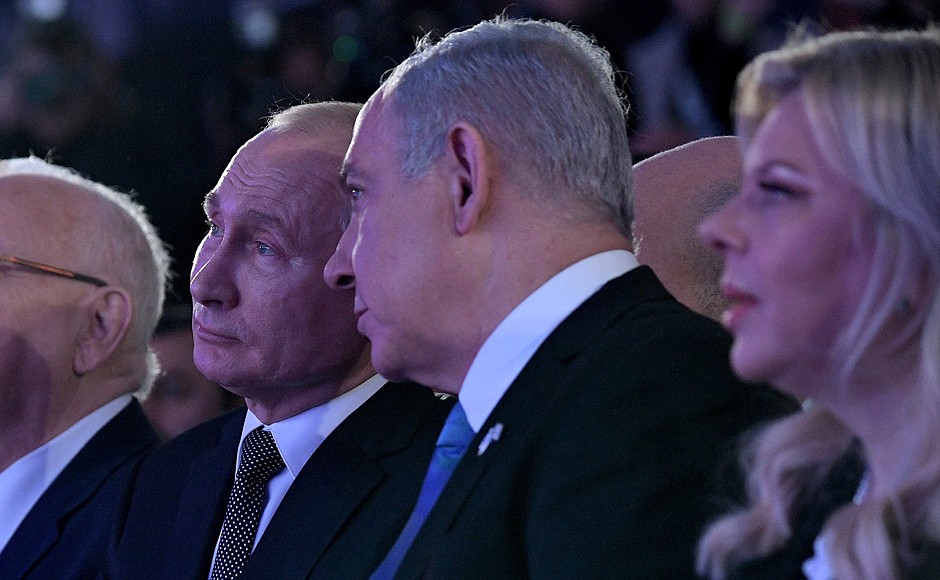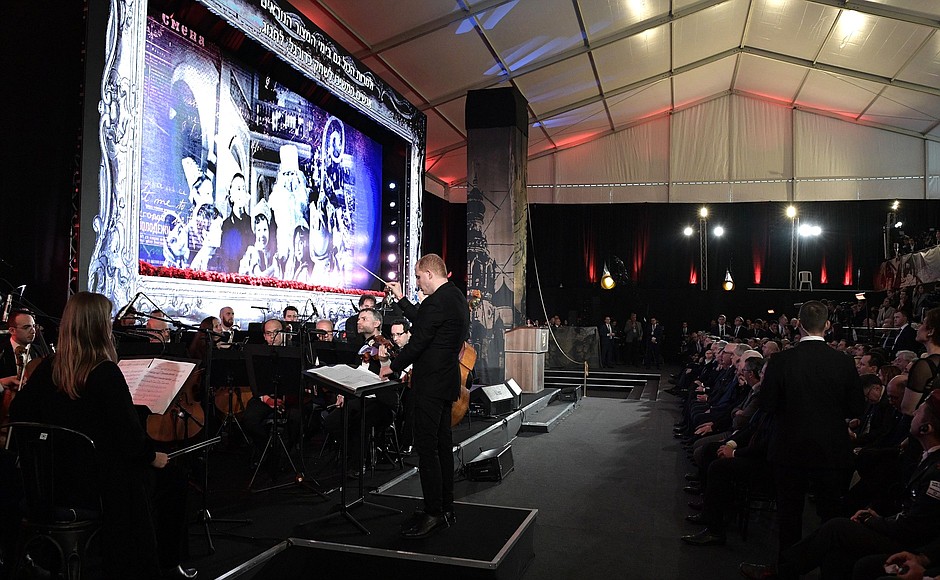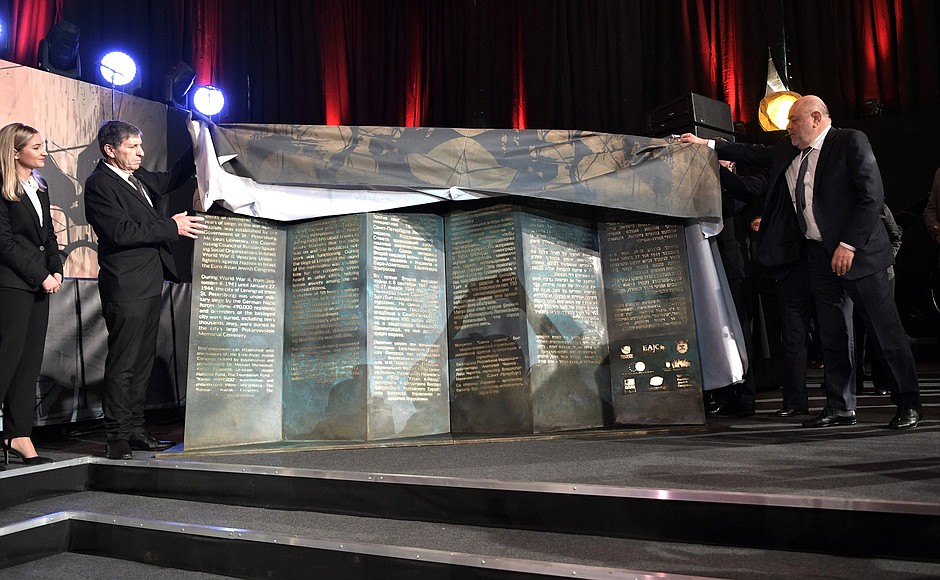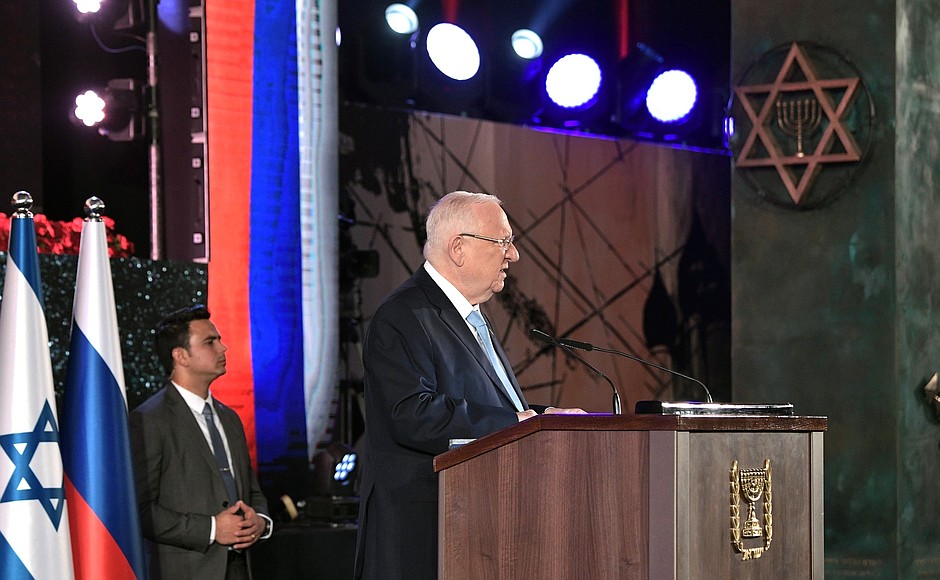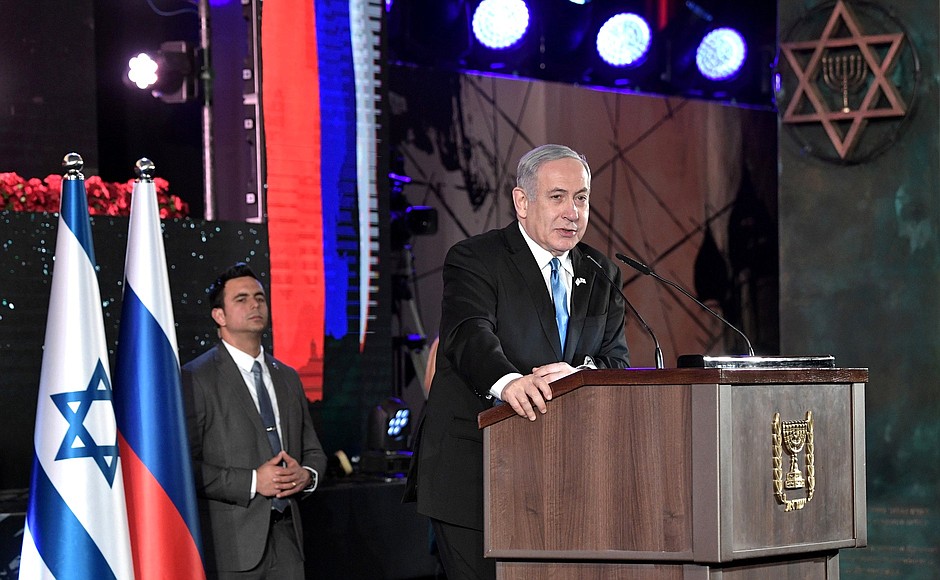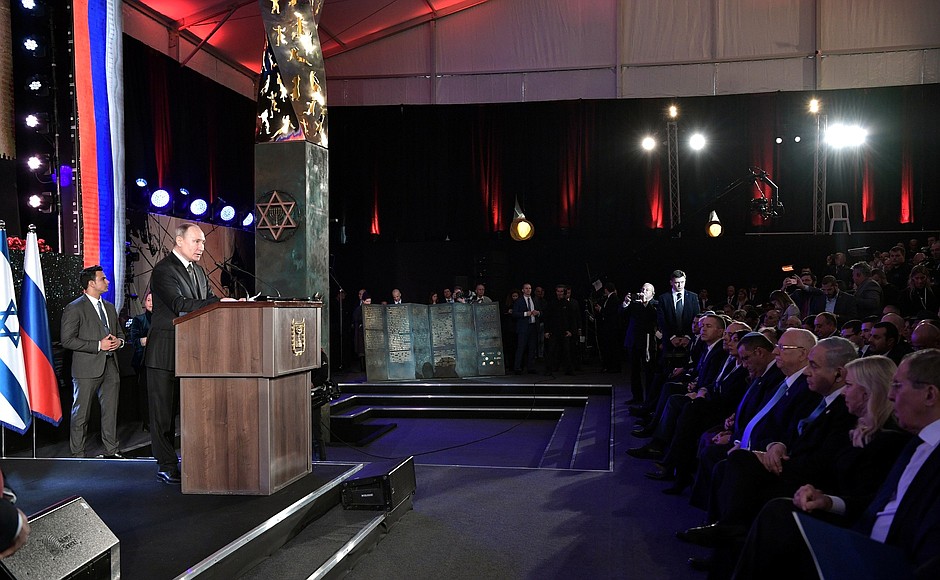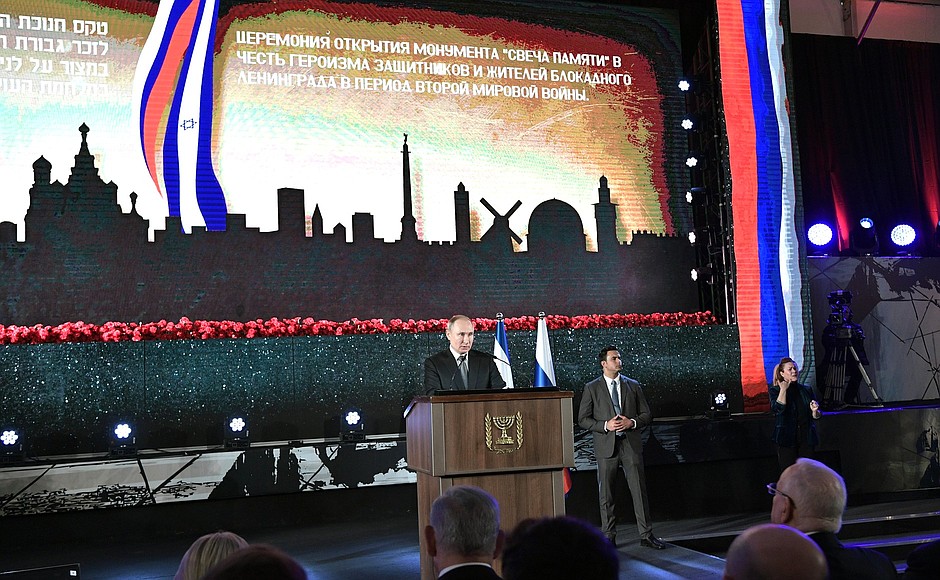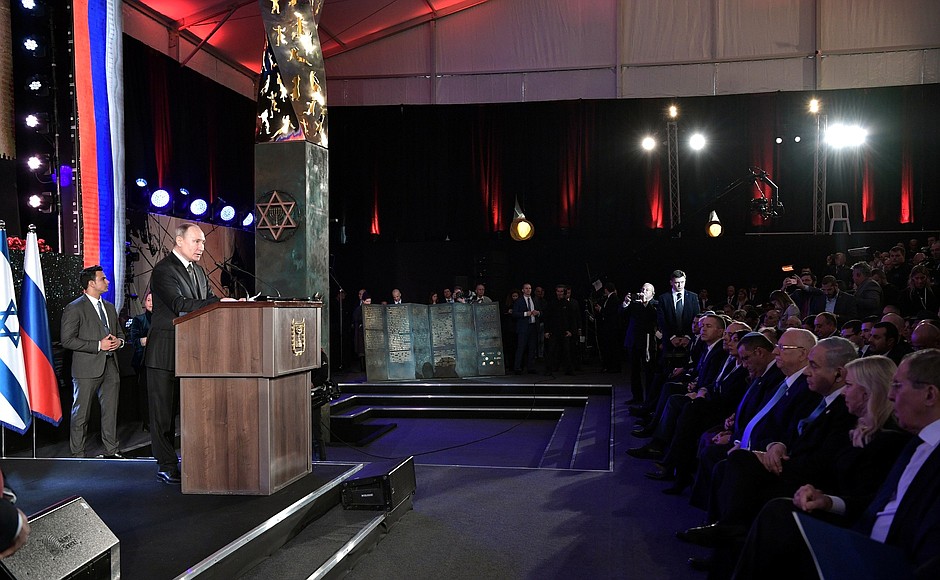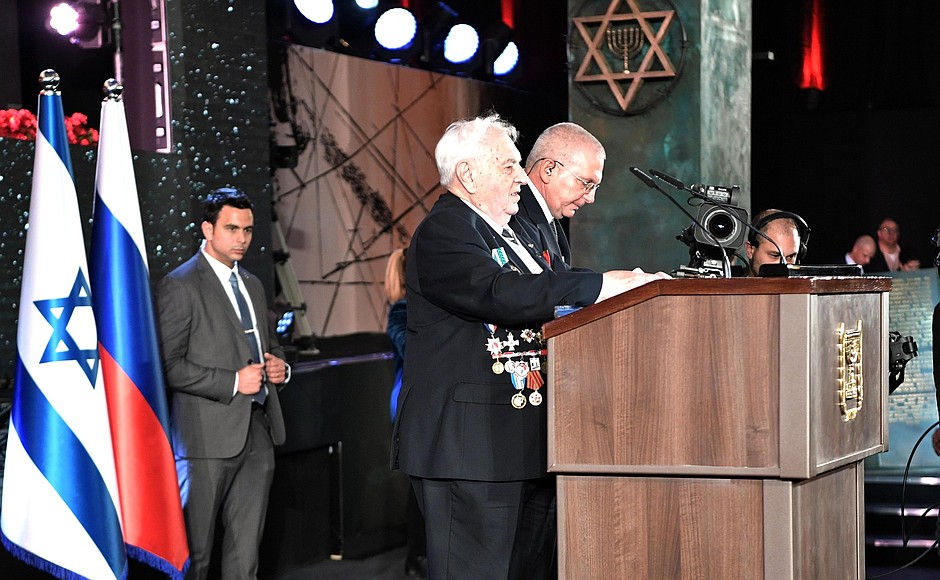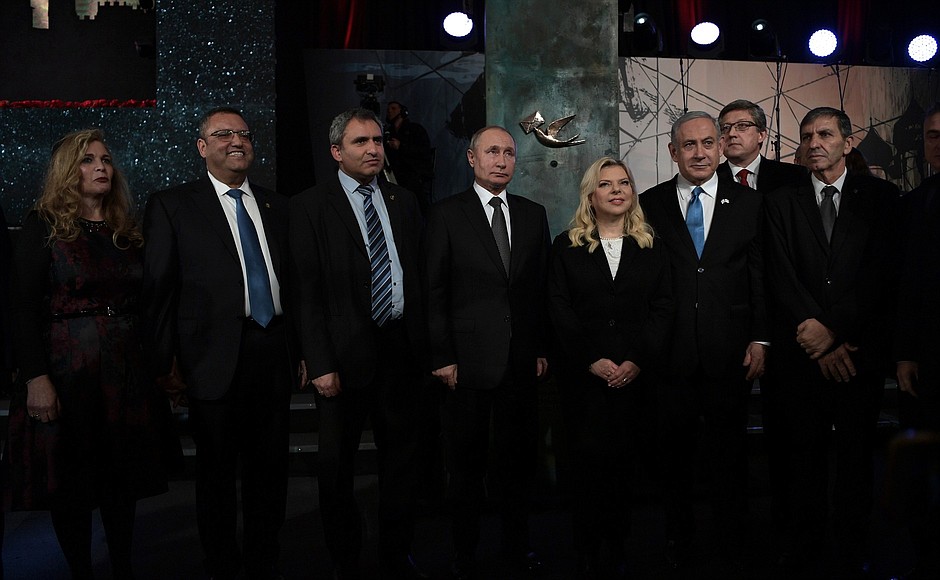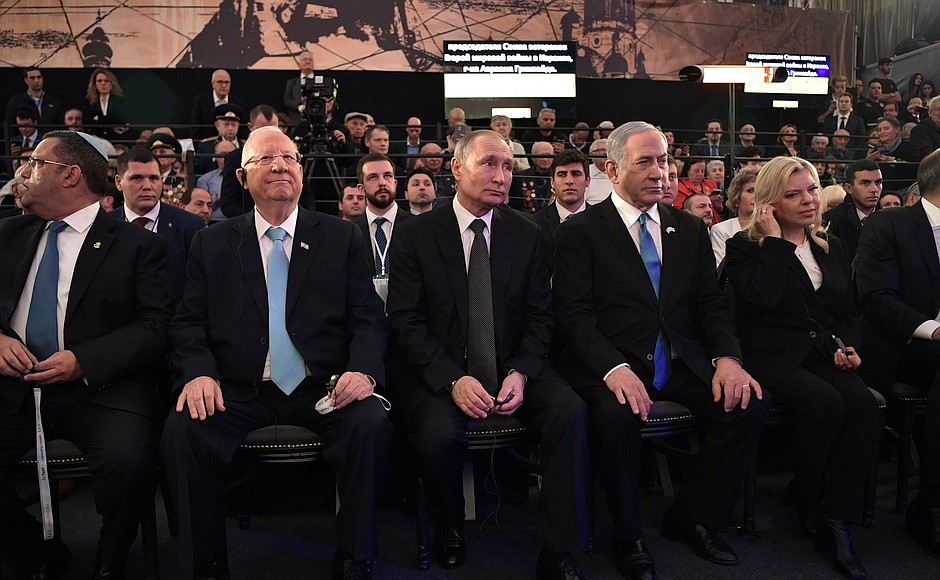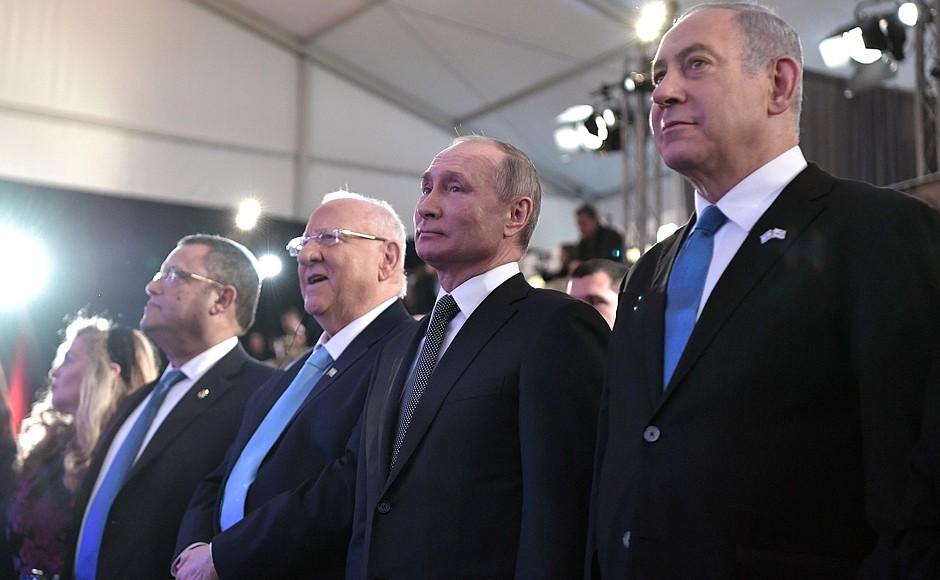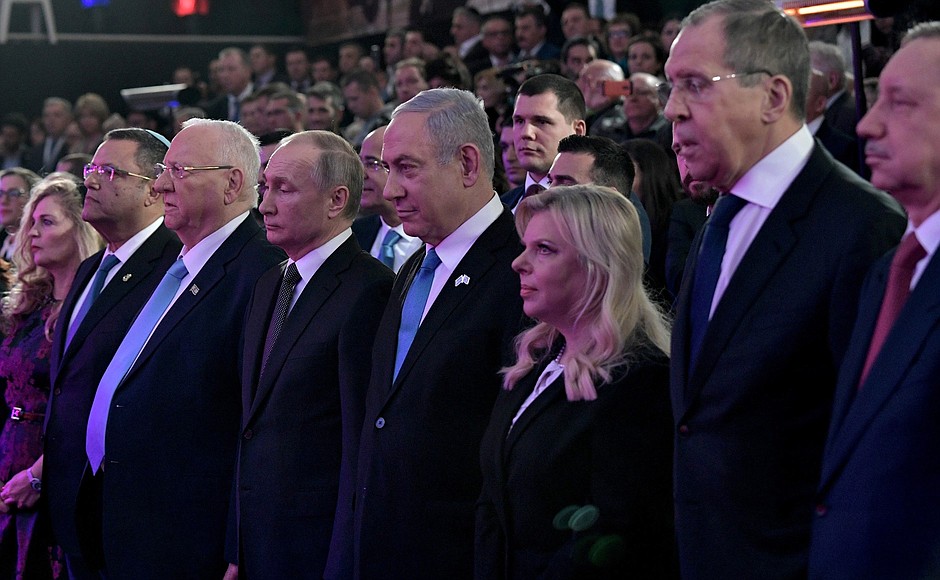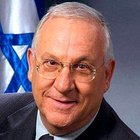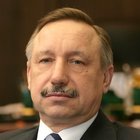The ceremony was also attended by President of Israel Reuven Rivlin, Jerusalem Mayor Moshe Lion and St Petersburg Governor Alexander Beglov.
A joint creation of St Petersburg and Israeli architects, the monument has been erected in Sacher Park in the centre of Jerusalem. A capsule with soil from the Piskaryovskoye Memorial Cemetery in St Petersburg, the largest burial ground for victims of WWII, was placed in the memorial’s foundation.
The idea of the memorial was proposed by war veterans, siege survivors and compatriots living in Israel, and was supported by Jewish associations of Russia and Israel.
* * *
Speech at the ceremony to unveil the monument
President of Russia Vladimir Putin: Dear war veterans, Mr President, Mr Prime Minister and spouse, Mr Mayor and spouse, friends,
It is a great honour for me to attend this ceremony held to dedicate a monument to the heroic defenders and residents of Leningrad. We are unveiling this monument ahead of the events that have special significance for our countries and nations.
One of the most dramatic and heroic moments in the history of WWII ended on January 27, 1944: the siege of Leningrad was finally lifted.
Exactly one year later – my colleagues already spoke about this here – on January 27, 1945, the Red Army liberated the prisoners of one of the largest Nazi death camps – Auschwitz. This day is now International Holocaust Remembrance Day.
There are many examples known throughout history of incredible stamina, sacrifice and horrible human tragedies. But it is impossible to compare the siege of Leningrad and the Holocaust with anything else.
The sacred memory of the martyrdom and courage of millions of people, incomprehensible losses, privations and heroism and our common fair anger at what the Nazis did is passed on from one generation to another.
The whole world knows about the siege of Leningrad and the neighbouring villages, and the unparalleled courage of their residents and defenders. But no documents, stories or diaries can describe what the people went through at that time.
My colleagues have just spoken about this. For me these are no mere words, I know this not from hearsay but from what my parents told me because my farther defended his native city at the front lines, and my mother was in the besieged city with a child that died in the winter of 1942 and was buried at the Piskaryovskoye Memorial Cemetery in St Petersburg among hundreds of thousands of other residents.
The enemy’s plan was absolutely cynical: to doom the city’s residents to death by starvation and, to quote a Nazi order, “to raze to the ground by permanent bombing.”
However, the enemy could not execute this order that is fixed in documents. The residents of Leningrad, people of different ethnic origins, did not give up. They did not spare themselves either at the frontline where incessant fighting went on, or in factories that continuously produced ammunition and hardware required by the front.
I have just mentioned hardware and ammunition. I did not know this but while looking through documents several days ago I discovered a fact that shocked me. During the siege, Leningrad residents donated 144 tonnes of blood for the front despite the situation they were in.
Deprived of food, light and heating, they continued working in hospitals and being involved in art, science and education, and by sacrificing themselves, they saved the great city for generations to come. Invincible Leningrad has become a true legend, while the grandeur of the strength of mind of its residents and their faith in victory has become the acme of human dignity.
The monument we have unveiled today is a symbol of our profound common memory. The idea to create it belongs to the devoted members of the Israeli public, war veterans, and our compatriots, and it was created with the support of the authorities of St Petersburg and Jerusalem, with funding provided by benefactors from both countries.
I would like to note with gratitude and appreciation that Israel attaches special importance to preserving the truth about the Soviet Union’s decisive contribution to victory over Nazism. People here, like in Russia, are concerned, alarmed and outraged by attempts to deny the Holocaust, revise results of WWII, and to whitewash murderers and criminals.
This is the second monument that we have jointly unveiled on Israeli soil over recent years (as Mr Prime Minister has just mentioned). The first monument was erected in the city of Netanya and immortalised the memory of the feats of valor committed by Red Army officers and men. An honest and utterly respectful attitude to Soviet soldiers has found a reflection in the displays at the Yad Vashem Memorial to European Jewish Holocaust victims.
We also hold dear the name of the monument that has been unveiled today. Every year, on June 22, the day when the Great Patriotic War began, the Memorial Candle function starts in Russia at four in the morning, with people in all cities and villages lighting candles in a sign of mourning for those who perished in that dreadful war. St Petersburg, formerly Leningrad, is where this tradition came into being in 2009. Now there is a candle of memory in Israel as well, where almost 1,300 survivors of the siege of Leningrad, their descendants and friends live and where people revere their heroes and remember the dead.
Here, like in Russia, people understand the importance of the lessons of WWII and are not allowing the world to forget what national egoism, disunity and connivance at any forms of chauvinism, antisemitism and Russo-phobia can lead to.
Our common duty is to pass this knowledge on to the coming generations, the great grandsons of the victors, while inculcating in them a thankful memory of those who have given us the gift of freedom and proved, at the cost of their lives, the enduring value of peace and justice.
In conclusion, I would like to say just a few more words. A monument is a very good thing; it will remain here for a long time, hopefully for centuries. It can be unveiled in different ways. But the way you did this today… Thank you.
